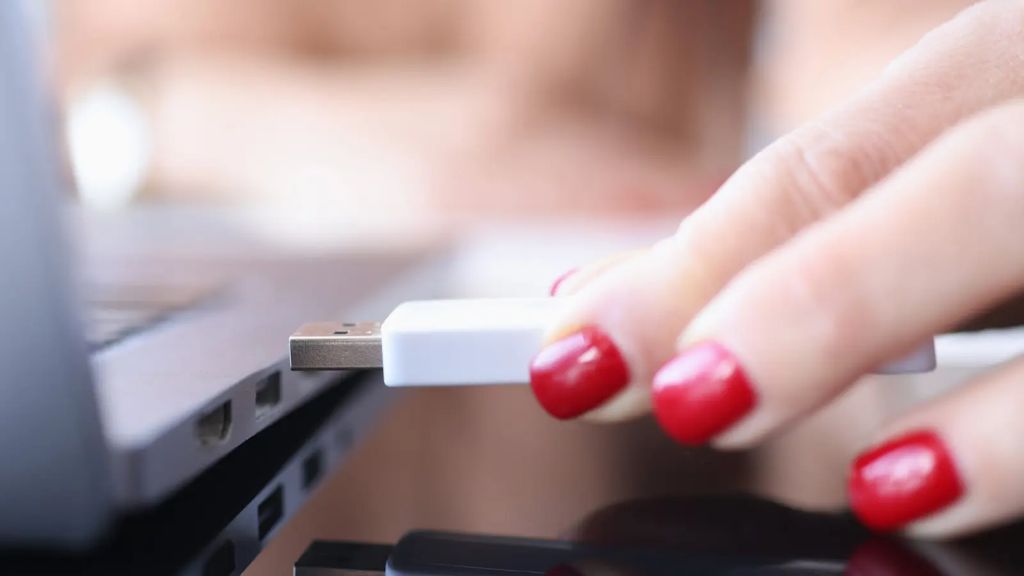Having issues connecting a USB device? Don’t worry – with a few troubleshooting steps, you can get your USB device working again.
Quick Fixes
Here are some quick things to try first when your USB device is not being recognized:
- Unplug the USB device and plug it back in again. Sometimes the connection just needs a reset.
- Try plugging the USB into a different USB port on your computer. The port you are using could be damaged.
- Check for debris. Use a can of compressed air to blow out any dust or debris from the USB port and device.
- Update your drivers. Outdated drivers can prevent USB devices from connecting properly.
- Restart your computer. If other USB devices are having issues as well, a restart may help.
Troubleshooting Steps
If those quick fixes don’t work, follow these more in-depth troubleshooting steps:
1. Check USB Cable
The most obvious cause of a USB device not connecting properly is a damaged USB cable. Here are some things to check:
- Inspect the cable for any obvious damage like cuts, nicks or flattened sections. Damaged cables need to be replaced.
- Check the USB connectors at each end and make sure they are not bent or broken. Gently straighten or replace as needed.
- Try connecting the USB device with a different USB cable if available. That will confirm a bad cable.
- Make sure the cable is correctly plugged directly into a USB port, not through a hub or extension cable which could cause issues.
2. Switch USB Ports
If you’ve tried plugging the USB device into the same port over and over, it’s time to switch to a different one. Try each available USB port, especially those directly connected to the computer.
3. Reinstall Drivers
Outdated, corrupt or missing drivers can prevent USB devices from connecting properly. Follow these tips for reinstalling:
- Unplug the USB device.
- Open Device Manager in Windows.
- Look for any devices with exclamation points and uninstall those drivers.
- Uninstall the drivers for the USB device if listed.
- Reboot the computer and try reconnecting the USB device to reinstall the drivers.
- If Windows is unable to install the driver, visit the device manufacturer’s website to download and install the latest driver.
4. Disable USB Selective Suspend
The USB Selective Suspend setting can sometimes prevent USB devices from reconnecting properly after being suspended. Follow these steps to disable it:
- Open Power Options in Windows.
- Click “Change plan settings” for your active power plan.
- Click “Change advanced power settings”.
- Expand “USB settings” and click “USB selective suspend setting”.
- Change the Plugged in and On battery settings to Disabled.
5. Update BIOS/Firmware
Outdated system BIOS or USB device firmware can cause connectivity issues. Update to the latest available versions:
- BIOS Update: Visit your computer manufacturer’s support website and follow their BIOS update instructions. Make sure not to interrupt the update process.
- Device Firmware: Check the USB device manufacturer’s website for available firmware updates. Follow their instructions to update the firmware.
6. Check for Malware
Malware infections that damage the USB drivers or ports can prevent proper USB connectivity. Scan for malware using antivirus software and repair any damage or reinstall drivers as needed.
Advanced Troubleshooting
For advanced users, you can try these steps for troubleshooting difficult USB connection issues:
Check USB Controller Status
Open Device Manager and expand the Universal Serial Bus controllers section. If you see any error symbols, the USB controller hardware may be damaged and require replacement if it cannot be updated.
Change Power Management Settings
Some power management settings like USB selective suspend can prevent proper USB communication. Disable power management for USB devices completely to see if that resolves connectivity issues.
Update Chipset Drivers
The chipset drivers handle communication between hardware components, including USB ports and devices. Updating these drivers may fix USB connection problems, especially after a major Windows update.
Disable USB Legacy Support
If you have very old USB devices, legacy USB support may be interfering with connections. Disabling legacy support in BIOS can resolve this, but will prevent using legacy USB devices.
Fix Registry Issues
Registry corruption related to USB devices can prevent proper connectivity. Try these steps:
- Open regedit.
- Navigate to HKEY_LOCAL_MACHINE\SYSTEM\CurrentControlSet\Control\USBDelegation.
- Check for any Registry keys related to your USB device and delete them.
- Navigate to HKEY_LOCAL_MACHINE\SYSTEM\CurrentControlSet\Enum\USB.
- Delete any keys or folders related to your USB device here as well.
- Restart your computer and reconnect the USB device.
Reset USB Ports
Resetting your USB ports will clear out any issues with the USB hubs and controllers:
- Open Device Manager.
- Expand the Universal Serial Bus controllers section.
- Right-click each USB hub, USB composite device, and other USB device.
- Select Uninstall device > Uninstall.
- Once uninstalled, restart your computer to reset the USB ports.
Replace USB Hub or Host Controller
If you have attempted all other troubleshooting steps, the USB hub or host controller may need to be replaced:
- Open Device Manager and expand Universal Serial Bus controllers.
- If you see any entries with yellow exclamation points, that device likely needs to be replaced.
- USB hubs can be replaced by disconnecting and getting a new USB hub.
- Replacing an internal USB host controller requires disassembling the computer and installing a new motherboard.
Conclusion
USB connectivity issues can be caused by many different things, but are usually repairable. Follow the quick fixes and troubleshooting steps outlined above to get your USB device working again. Reach out for professional computer repair if needed for advanced issues like USB port or motherboard replacement.
